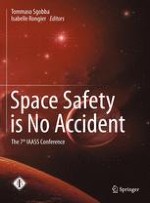2015 | OriginalPaper | Buchkapitel
Defining Reliability and Robustness from a Human Factors Perspective
verfasst von : Alan Hobbs, John O’Hara, Bernard Adelstein, Cynthia Null
Erschienen in: Space Safety is No Accident
Aktivieren Sie unsere intelligente Suche, um passende Fachinhalte oder Patente zu finden.
Wählen Sie Textabschnitte aus um mit Künstlicher Intelligenz passenden Patente zu finden. powered by
Markieren Sie Textabschnitte, um KI-gestützt weitere passende Inhalte zu finden. powered by
